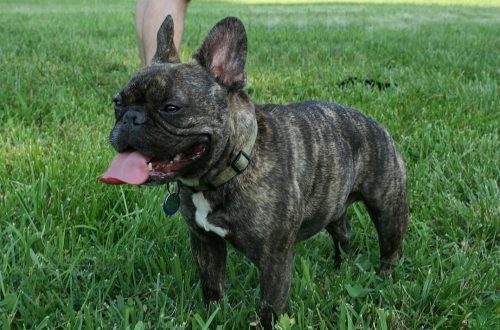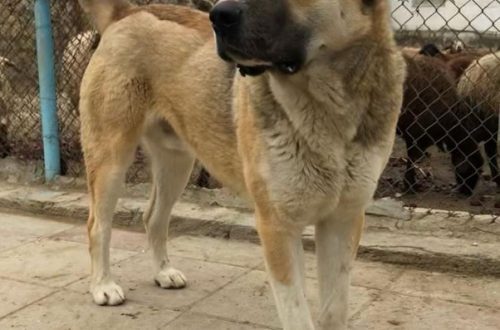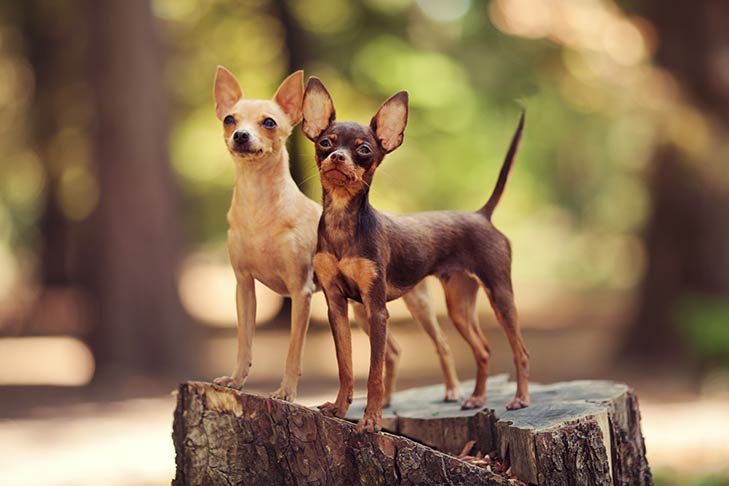
Russian Toy Terrier
Other names: Russian toy , toy terrier
The Russian Toy Terrier is a miniature and extremely emotional smart dog. A faithful companion and a tireless prankster, he will gladly support any game.
Contents
- Characteristics of Russian Toy
- Basic moments
- History of the breed Russian toy terrier
- Video: Russian Toy Terrier
- The appearance of the Russian toy terrier
- The nature of the Russian toy terrier
- Education and training
- Care and maintenance
- Health and disease of the Russian Toy
- How to choose a puppy
- Photos of Russian Toy puppies
- How much is a Russian toy terrier
Characteristics of Russian Toy
| Country of origin | Russia |
| The size | small |
| Growth | 22-27cm |
| Weight | 2-3 kg |
| Age | 12-15 years old |
| FCI breed group | Decorative and Companion Dogs |
Basic moments
- Due to their extremely small size, Russian Toy Terriers are ideal for keeping in apartments with a shortage of free space.
- They are not aggressive, but they are considered good watchdogs.
- Intellectuals and great cunning, quickly studying the weaknesses of their own master and able to masterfully put pressure on pity.
- They are very susceptible and excitable, so they respond to every suspicious sound with a ringing bark.
- They respond to an affectionate and friendly attitude and categorically do not accept the authoritarian style and psychological pressure from the owner.
- In the process of training, they often show stubbornness and indiscipline, although they do not belong to difficult breeds.
- They have outstanding memory abilities. They can store even minor episodes in memory for several years.
- They get along well with other pets, but are not recommended for living in families with small children due to low stress resistance.
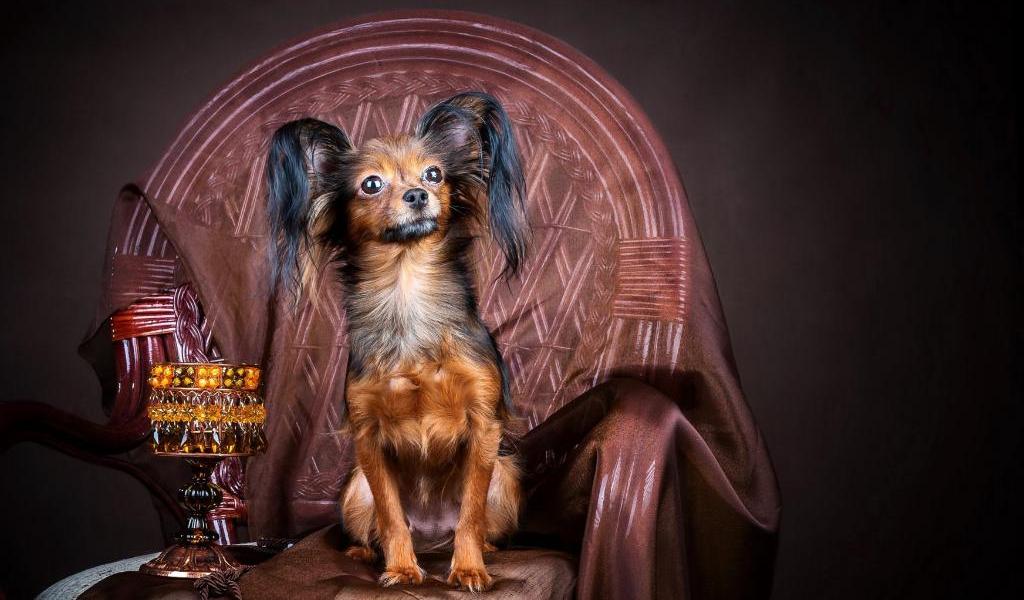
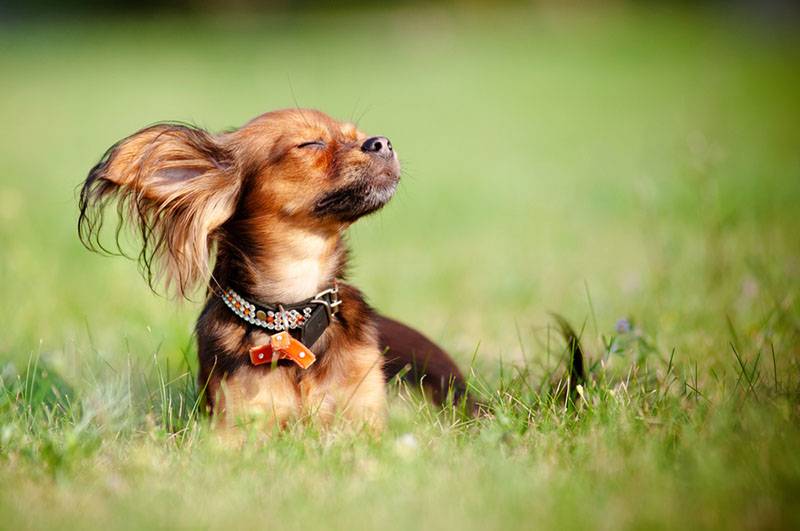
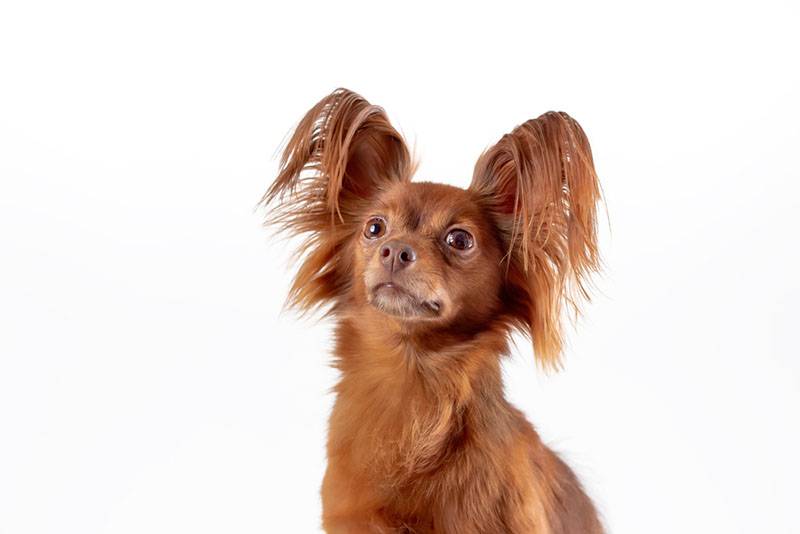
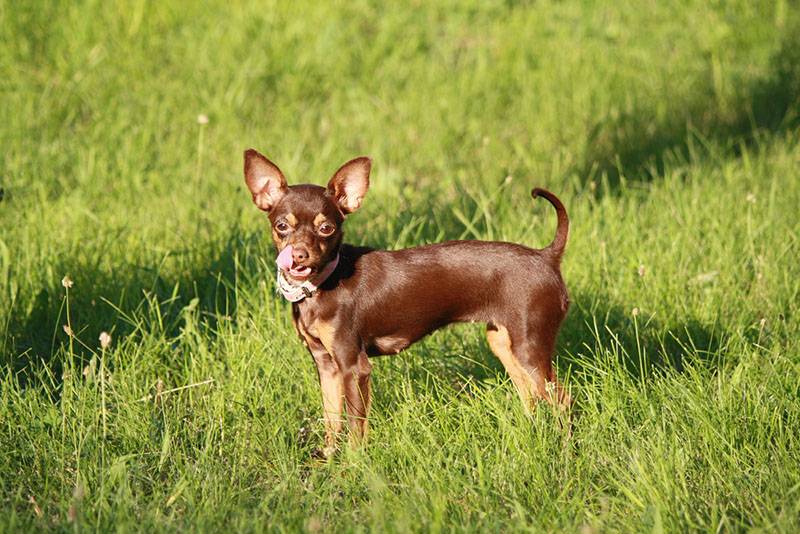
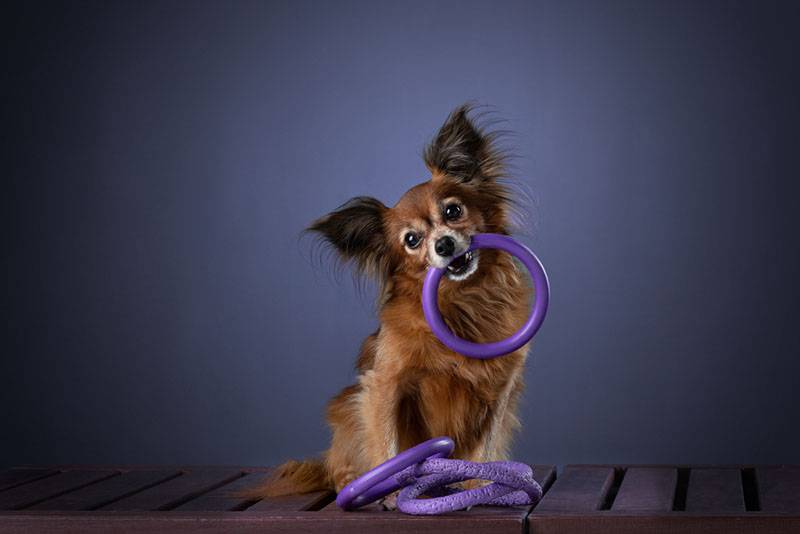
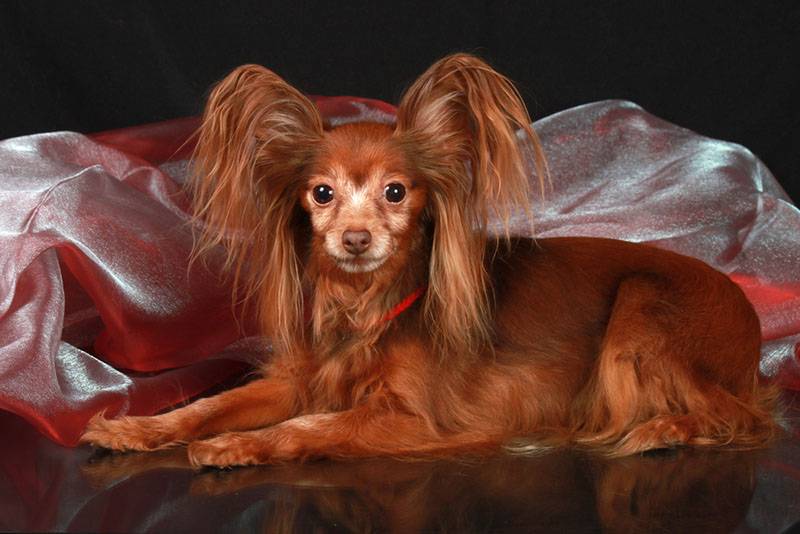
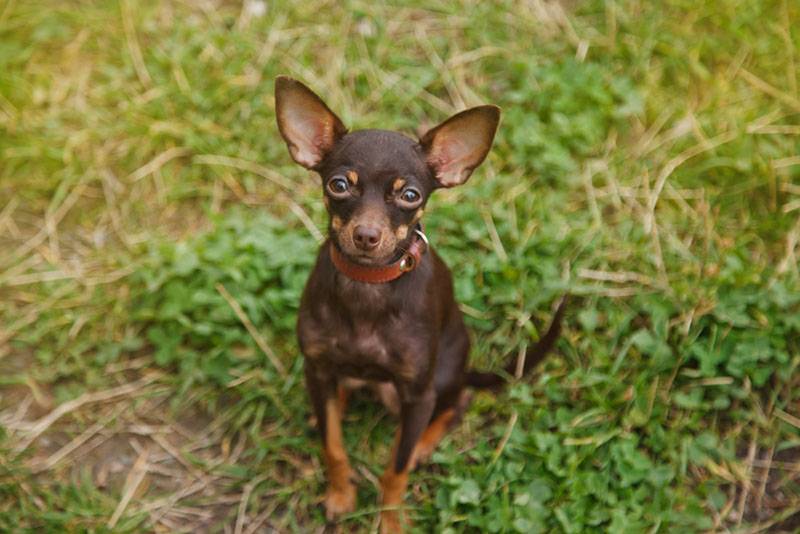
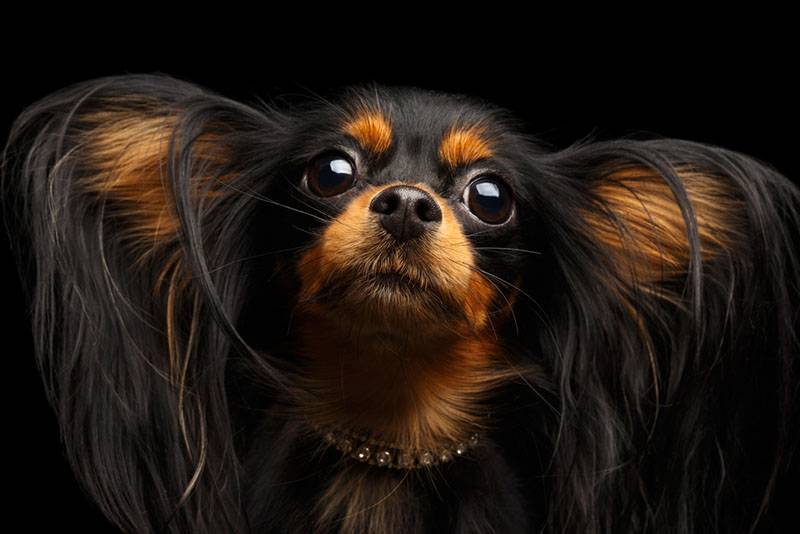
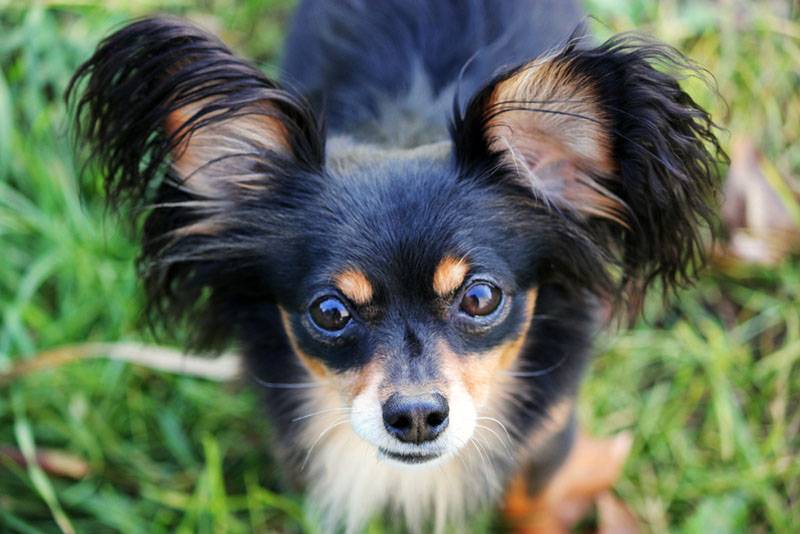
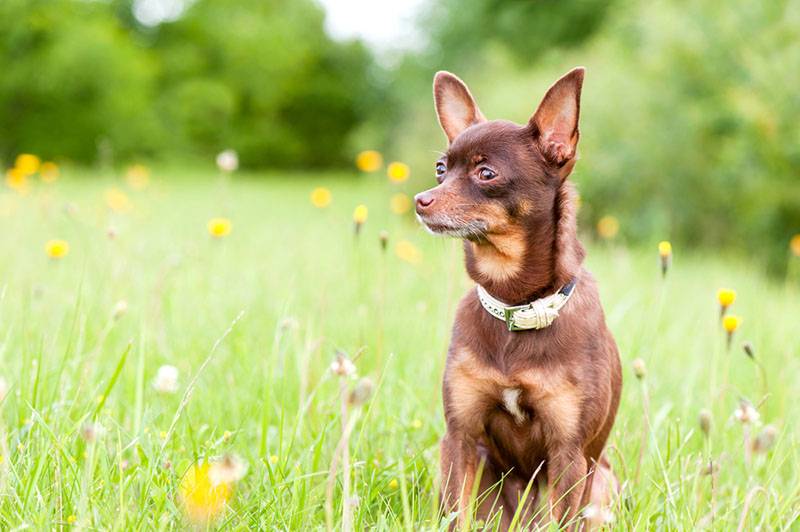
The Russian Toy Terrier is a dog that, despite its tiny size, is able to fill all the free space with itself. Clockwork and restless, these smart kids do not favor solitude and are happy to accompany the owner wherever possible. They walk on leashes, go on picnics in bicycle baskets and travel in handbags. In addition, representatives of this breed have always enjoyed a reputation for being very positive and sociable pets, with whom it is easy to find a common language.
History of the breed Russian toy terrier
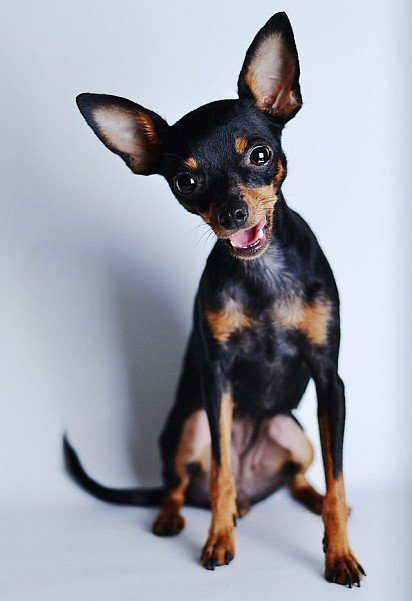
The progenitors of Russian toys were English toy terriers, who gained fame as incomparable rat-catchers. The first representatives of this venerable family appeared in Russia back in the Petrine era, and by the middle of the 19th century, small but extremely frisky dogs turned into favorite pets of the domestic elite. Toy terriers lived in imperial residences, guarded the chambers of wealthy landowners, driving around balls and social events with their arrogant mistresses.
With the advent of Soviet power, decorative dogs migrated to the category of “bourgeois excesses.” The new government gave preference to more useful breeds aimed at full-fledged service and protection, so for almost half a century toy terriers remained in the shadows, gradually dying out and degenerating.
In the 50s, Soviet cynologists-enthusiasts decided to revive the tribe of the legendary parlor dogs. But since there were no purebred representatives of the toy terrier family in the USSR by that time, specialists had to work with animals without pedigrees and individuals taken by Soviet soldiers from Germany as war trophies. An additional complication was also that the offspring obtained during the experiment could not be compared with cubs of English terriers due to the politics of the Iron Curtain. As a result, domestic experts did not suspect for a long time that they had bred a new breed that was significantly different from the one they were originally oriented towards. So, for example, toy terriers of the Soviet “spill” were one and a half times smaller than their British counterparts, had different body proportions and the shape of the skull.
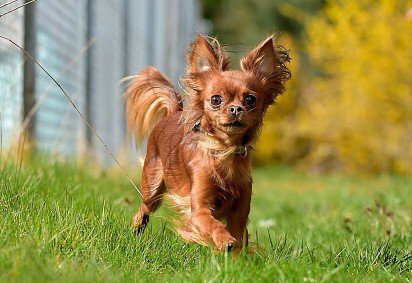
However, the discoveries did not end there. In 1957, in a family of Russian Toy, where one of the parents was not purebred, a male puppy was born with long fringes of wool in the ears and paws. The animal looked so cute and funny that the breeders decided to keep this attractive mutation, leaving the puppy to the tribe. This is how an independent branch of the breed appeared – the Moscow long-haired toy terrier.
Despite the sharply increased popularity, Russian toy terriers for quite a long time remained “local” pets, practically unknown outside the country. And only in 2006, the International Cynological Association, reluctantly and with reservations, recognized an independent breed in salon dogs. At the request of the FCI Commission, Russian Toy Terriers were renamed Russian Toy Terriers and received the right to participate in world and European championships.
An interesting fact: Alla Pugacheva, Garik Kharlamov, Sergey Lazarev, Christina Aguilera and Diana Gurtskaya were noted among the eminent owners of these “toy” dogs.
Video: Russian Toy Terrier
The appearance of the Russian toy terrier
Russian Toy – baby dogs weighing up to 3 kg. The average height of an individual is 20-28 cm, but often so-called mini-animals are born, whose height can be several centimeters lower than allowed by the standard. Despite these miniature dimensions, Russian Toy Terriers look very graceful, which is partly due to the thin skeleton and lean muscles.
Head
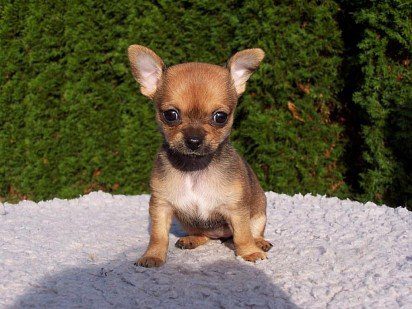

The skull is small, but high and moderately wide. The cheekbones are flattened, slightly pronounced. The muzzle is dry, pointed. The transition from the forehead to the muzzle is clearly “drawn”. Lips black, thin. The nose is medium, black, or in the tone of the main color of the animal.
Jaws
The Russian Toy Terrier has a scissor bite, small white teeth. The absence of several incisor teeth is allowed (two incisors for each jaw).
Eyes
Rounded, large, slightly convex. Landing is straight. The distance between the eyes is wide. The shade of the iris may vary.
Ears
The ears of the toy terrier are large and thin at the same time. standing. Set high.
Neck
Slightly curved, long. Set high.
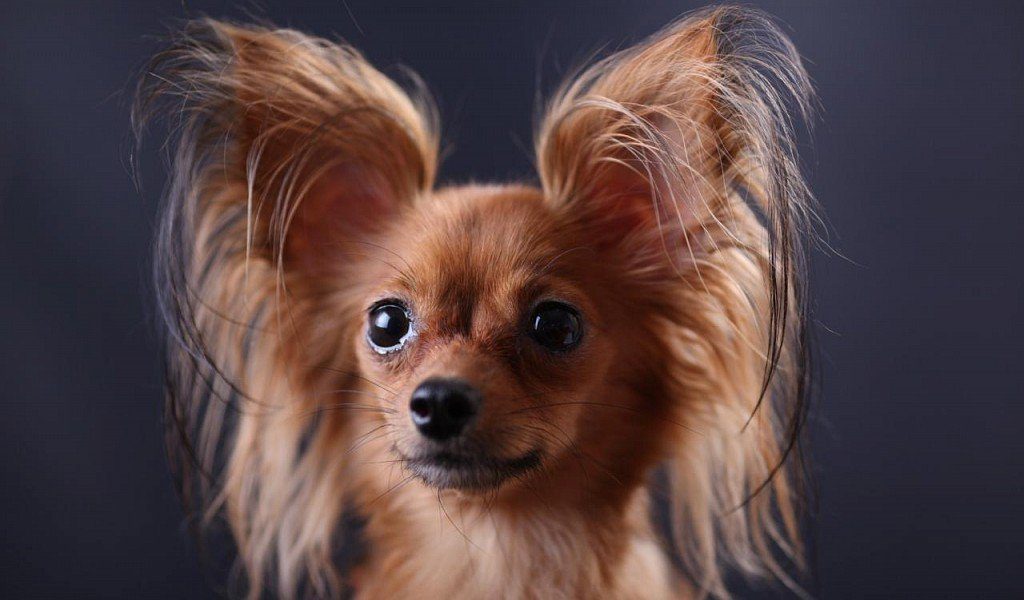

Body
The back is strong and level with a smoothly descending upper line from the withers to the tail. Body with rounded croup. The abdomen is tucked up, the lumbar zone is short and convex. The fitted groin makes the lower line of the body taut and curved-relief. The chest is not wide, but deep.
limbs
The front legs are straight, set parallel to each other. The muscles of the limbs are dry, the elbows look back. The length of the shoulders matches the length of the shoulder blades. The shoulder angle is 105°. The hind limbs are slender, straight (when viewed from behind), set slightly wider than the forelegs. The muscles of the thighs are developed, but dry. The shins and thighs are the same length. The paws are small, oval-shaped, arched, going into a “lump”. The front paws are slightly wider than the hind legs. The pads are black, or repeating the main color of the body, elastic.
Tail
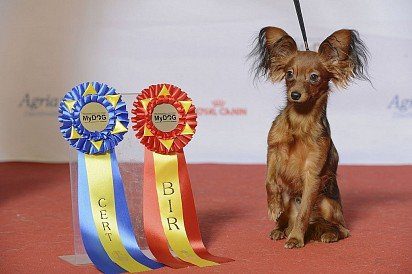

In Toy Terriers, both docked and natural variants are allowed. The docked tail is usually short (the recommended length is no more than 3 vertebrae), directed upwards. Undocked, it has the shape of a crescent or crescent, carried at the level of the back, sometimes higher.
Wool
The characteristics of the coat are directly dependent on the variety of the individual. Short-haired Russian Toy Terriers have a smoother coat, close to the body, characterized by an almost complete absence of undercoat.
In long-haired animals, the outer hair is longer, within 3-5 cm. The coat fits snugly against the skin in the trunk area. The hair has a slightly wavy or straight structure, the ears have a fringed-type coat. In adults, a falling “fringe” hides the edge and tips of the ears. The back side of the limbs is decorated with so-called brushes. In the area of \u200b\u200bthe paws, soft, lush hair also grows, covering the fingers and claws of the dog.
Color
Purebred individuals are distinguished by rich red, fawn, brown and black and tan, as well as lilac and blue and tan colors.
rock defects
The faults of the breed include any inconsistencies in the standard of appearance. These are usually: excessively tall (above 28 cm), level bite, semi-erect ears and a low tail. The presence of white marks on the paws and in the chest area, as well as mono-colors (blue, brown, lilac, black) is not welcome.
The main disqualifying vices of Russian toy terriers
- The presence of bald spots in short-haired individuals, in long-haired individuals – the absence of fringed hair on the ears.
- Underweight – less than 1 kg.
- Marble, spotted and white colors, as well as the presence of brindle marks.
- Aggression or cowardice.
- Short legs.
- Hanging ears.
- Malocclusion.
- Absence of fangs and more than 2 incisors in each jaw.
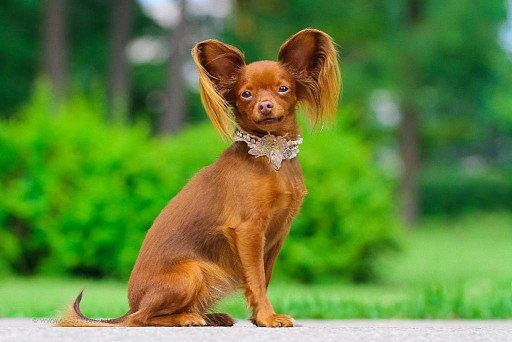

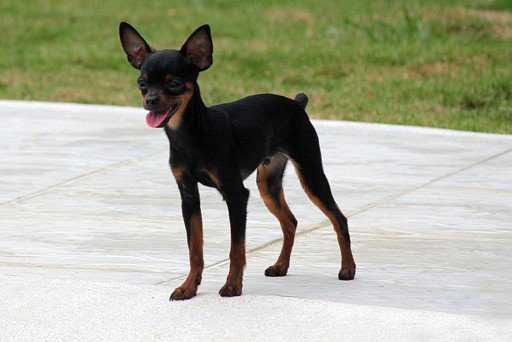

The nature of the Russian toy terrier
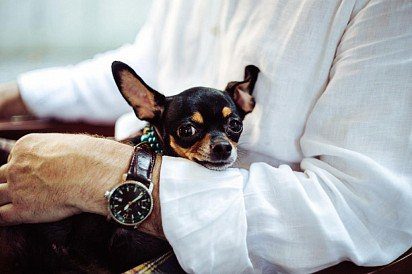

Russian toy terriers are pets that can dispel any blues. Mobile, affectionate and emotional, they are ready to frolic and play pranks all day long. These temperamental kids require a lot of attention and constant “feedback”, therefore, when buying a Russian Toy, get ready for the fact that peace and solitude will disappear from your home forever as soon as the animal crosses its threshold. Representatives of this breed are completely non-aggressive, which does not in the least prevent them from being excellent watchmen, warning with their sonorous barking about the arrival of an uninvited (and often invited) guest. Among breeders, Russian Toy Terriers are known for being very smart and skillful manipulators. If the owner, smitten by the touching appearance of the pet, gives up, there is no doubt: the animal will find a way to use this loyalty to its advantage.
The specific features of the breed include the psycho-emotional instability of its representatives. Russian toy terriers are easily “turned on” by the slightest rustle and do not calm down soon. As a rule, excitation is accompanied by increased activity of the animal and prolonged barking. Of the unusual talents of miniature dogs, their amazing memorization abilities are of particular interest. In particular, Russian toi are able to keep in memory the events of three years ago. It is not uncommon for an animal to remember and recognize a person it has only met once.
Education and training
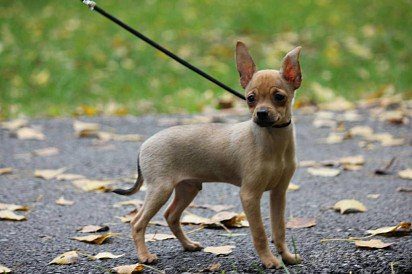

There are no special methods for teaching basic commands for Russian Toy Terriers, so standard training techniques are applied to them. However, these dogs perceive the authoritarian style of influence poorly. The animal is frightened, withdraws into itself, or vice versa, tries to be cunning, which negatively affects the formation of its character. In general, representatives of this breed are not the most diligent students, so you should not hope for lightning-fast success in mastering commands. Of course, with sufficient patience and perseverance, toys can be taught all the necessary skills, it just takes a little more time to achieve the final result than, for example, when training shepherd dogs.
Puppies under the age of 6 months require especially reverent attitude: no matter how the pet gets you with its pranks, punishment is not applied to it. If the puppy’s poor progress during training causes irritation, it is better to postpone the lesson. However, it is also not worth it to overly indulge the whims of the pet. As much as you’d like, don’t let your dog sleep in your bed. Representatives of this breed have a rather weak skeleton, for which even a simple jump out of bed can result in serious injury. And of course, do not forget about the systematic rewards that help simplify the training process and achieve your goals faster.
How to stop a Russian Toy Terrier from barking
Violent barking is considered the main drawback of the breed. Toy Terriers bark often and a lot, and the reasons for such “opera arias” can be the most insignificant. Do not try to calm an excited dog with petting and gentle persuasion. A cunning pet will take this as an encouragement and will try even harder. Painful techniques and surgical intervention are fraught with a negative impact on the already unstable psyche of the dog.
Usually, barking is stopped by a command (“Fu!”, “No!”), Pronounced in a strict tone. Sometimes the ban is accompanied by a light slap on the animal with a newspaper. In some cases, the method of ignoring is used. When the dog begins to bark, the owner deliberately distances himself and tries not to look at him. As a rule, without receiving support from the outside, the one turns off the concert. The latter technique is considered alternative and energy-consuming, since it takes more time and nerves for the owner to develop the skill than when using command technique. In addition, ignoring does not work in cases with older puppies, whose upbringing was not previously involved. Such animals are already accustomed to making a commotion, so they are unlikely to follow the behavior of the owner.
How to wean a Russian Toy from biting
From an excess of emotions, Russian toy terriers often bite their owners. Despite the fact that such injuries do not cause serious harm to health, it is still not worth indulging a pet. You can wean an animal from a bad habit by a slight exclamation of “Ai!”, Signaling the infliction of pain. If the incident occurred during the game, stop the game and leave the pet alone for a while so that he realizes that he made a mistake. In no case do not beat the dog, it will only worsen the situation.
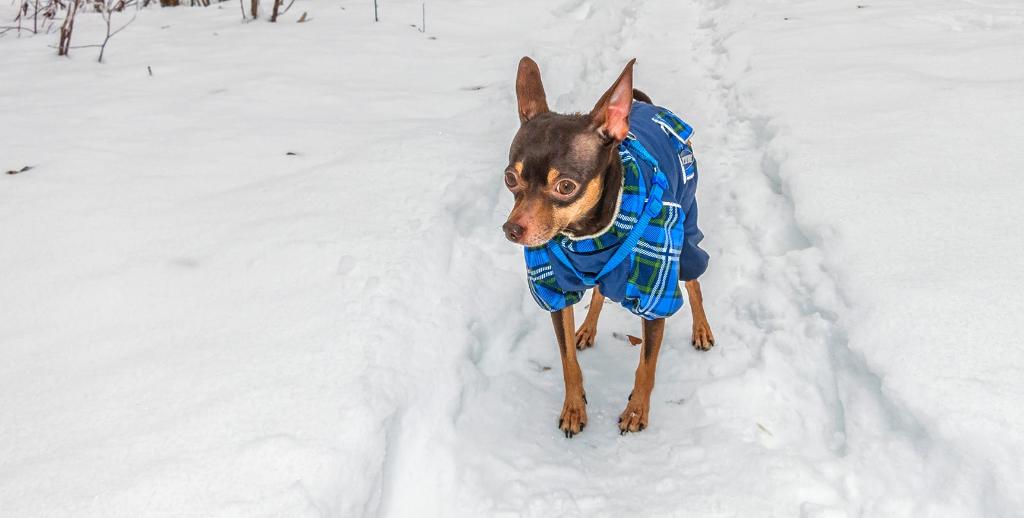

Care and maintenance
Due to its charming appearance and tiny dimensions, the Russian Toy Terrier resembles a funny toy that is difficult to perceive as a full-fledged adult animal. Regulars of Instagram and thematic photo shoots, these dogs more and more turn into a fashion accessory and live advertising of their owner. Artificial hype is also added by manufacturers of clothing for dogs, who sew entire collections of outfits and shoes for toys. However, experienced breeders do not recommend getting too carried away with fashion shows. It is enough to purchase several insulated overalls for the pet for the autumn-winter season. But the “packing” of a living being in narrow dresses, and even more so, in boots, is clearly superfluous.
Important: the characteristic trembling inherent in representatives of the Russian Toy breed is not an indicator of hypothermia. Usually dogs tremble from an excess of emotions and overexcitation.
Hygiene
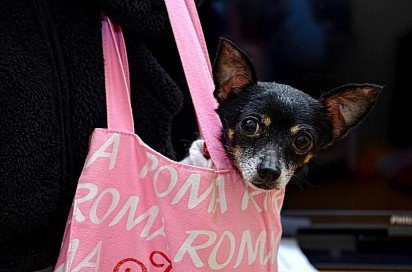

Do not go to extremes and clean your pet’s ears daily. If there are no foreign objects and contaminants in the ear funnel, the hygiene procedure is carried out once a week, using boiled and cooled vegetable oil and a cotton pad, or a cleaning lotion from a veterinary pharmacy. Once or twice a week, dogs brush their teeth with a special toothpaste or chalk powder with soda and lemon juice. The claws of adult animals are supposed to be cut every 15-20 days. 10-day-old puppies also cut the claw plate so that the cubs do not injure the mother.
Russian Toy does not need the services of a breeder and daily combing (with the exception of long-haired individuals). It is enough to regularly remove dirt from the coat with a cleaning mitt. Too frequent water procedures can dry out the pet’s skin and cause bald spots, so experts recommend bathing Russian toy terriers every six months. Puppies under 6 months of age are strictly prohibited from bathing.
Feeding
There are three options for feeding Russian Toy: “natural”, “drying” and a mixed diet. In the first case, the daily “menu” of the animal should include meat (preferably beef), dairy products (no more than 3% fat), sea fish fillets, cereals, egg yolk, vegetables and fruits. Each “meal” of the dog should consist of 1/3 of animal protein (meat, fish) and 2/3 of cereals, vegetables and dairy products. The volume of each serving is based on 50-80 grams per kilogram of the dog’s weight.
From time to time, it is useful to treat a pet with rye crackers and vegetable oil in the amount of 1 teaspoon per day. A couple of times a month they give a garlic clove, which works as an antihelminthic. Baking, smoked meats, bones, exotic fruits, egg whites and river fish are strictly prohibited.
In the case of dry food, preference is given to varieties that include at least three types of cereals, vegetables, fruits, and at least three animal proteins. Variants with soy, yeast supplements, wheat and corn are best avoided. Adult individuals are given food twice a day, combining it with taking a vitamin-mineral complex selected by a veterinarian.
Toilet
Russian toy terriers do not get used to the tray right away, and sometimes they don’t get used to it at all, so often the only possible toilet option for a dog is a diaper (newspaper). Carefully monitor the puppy in the first months of life. In particular, after sleeping, feeding and playing, be sure to put him on a diaper or in a tray to catch the moment when the baby is about to relieve himself. After each “puddle” made in the right place, the pet is supposed to be praised and treated. A fairly effective way is to place the dog in an aviary with a tray, thus limiting its habitat. Usually the puppy quickly realizes that arranging a toilet next to his own bed is not a good idea, and uses the tray.
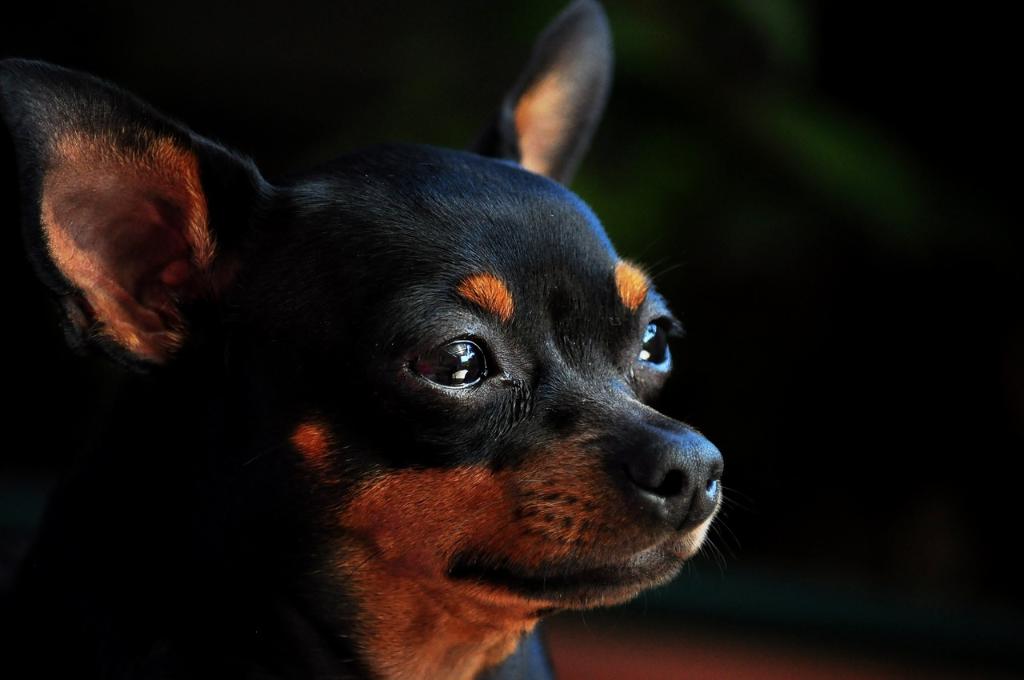

Health and disease of the Russian Toy
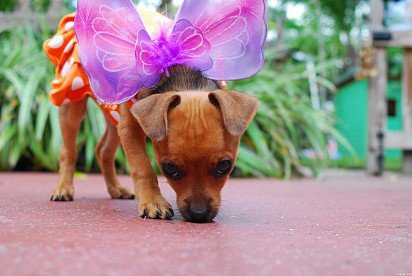

The average Russian Toy Terrier lives from 10 to 15 years, although there are cases in history when individual representatives of this genus lived to the 20th anniversary. The most common diseases of Russian Toy are cataracts, retinal atrophy, subluxation of the patella, hydrocephalus. Pancreatitis is quite common, which is the result of attempts to diversify the dog’s diet with the help of pickles and fatty smoked meats.
The fragile thin skeleton and excessive mobility of the animal are of particular danger, therefore representatives of this breed are injured easily and often. Some individuals may have a genetic anomaly such as aseptic necrosis of the femoral head. Usually, the disease leads to pet lameness, and if left untreated, to complete atrophy of the hind limbs.
How to choose a puppy
Choose an affectionate, easy-going animal at the age of 2.5, and preferably 3 months. During this period of life, the weight of the puppy should be about 1.5 kg. If the dog weighs 600 g or less, most likely they are trying to sell you a defective dwarf. Try to get the most complete information about the puppy’s pedigree, even if you are going to buy a pet Russian toy terrier.
Reasons to be concerned:
- the puppy is shown in a cage without letting it out;
- animal hair has bald spots;
- the dog has too bulging eyes or slight strabismus, which is often a sign of increased intracranial pressure;
- there is discharge from the nose and eyes;
- the puppy does not have a veterinary passport.
Photos of Russian Toy puppies


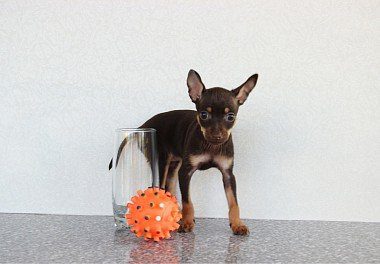

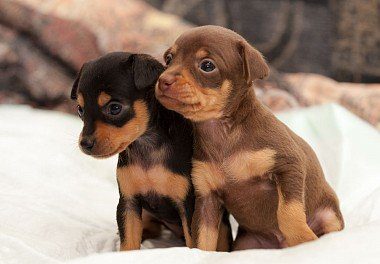

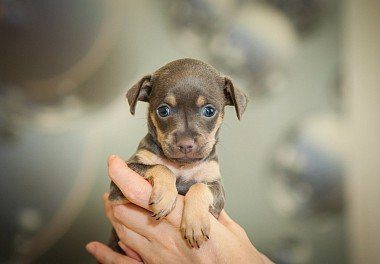

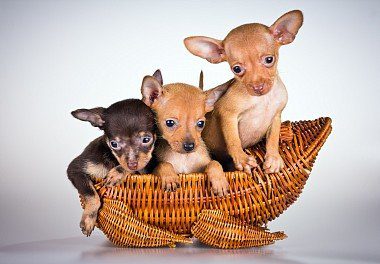

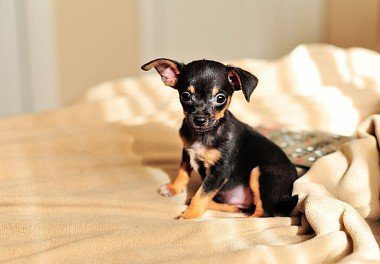

How much is a Russian toy terrier
In nurseries, you can buy a Russian toy terrier puppy for 350 – 900$. Cheaper options can be found on ads. In this case, the price of an animal with the RKF metric will be from 200 to 250$. In addition, the cost is affected by the class, sex and color of the dog. Although the sexual type of Russian Toy is poorly expressed and the external characteristics of males and females are approximately the same, the latter will cost significantly more. Of the entire palette of colors, lilac and tan and blue and tan are considered the most scarce and, accordingly, expensive. The cheapest color option is red.





